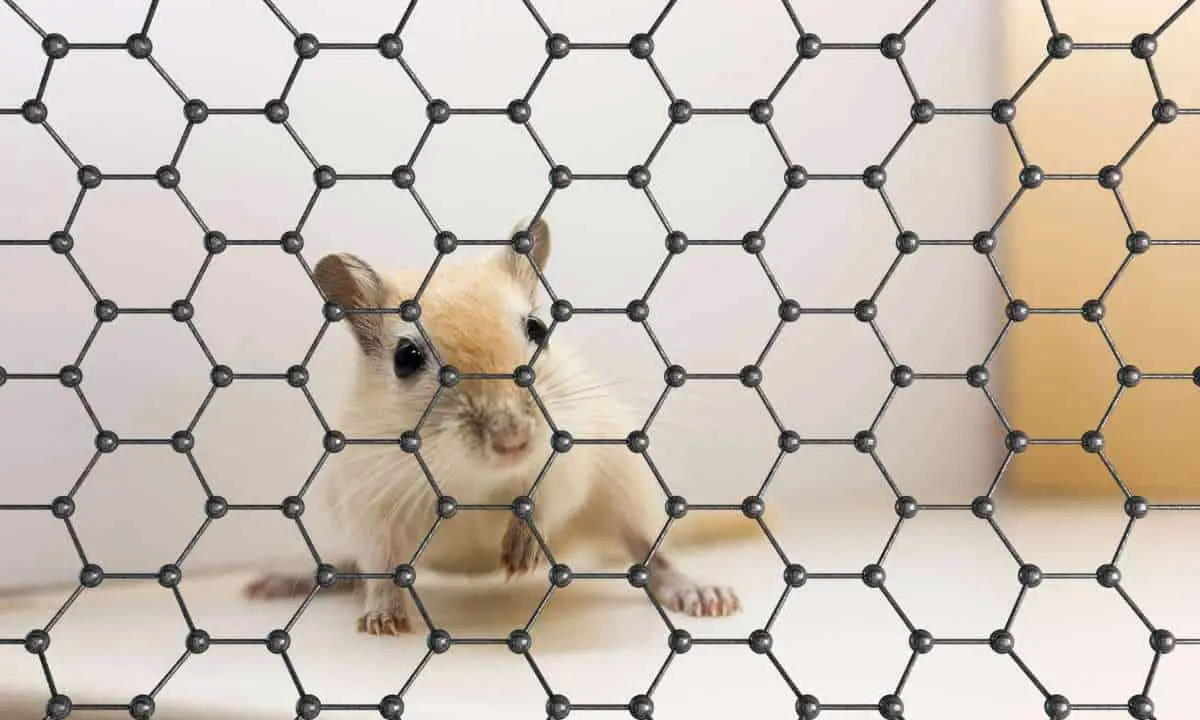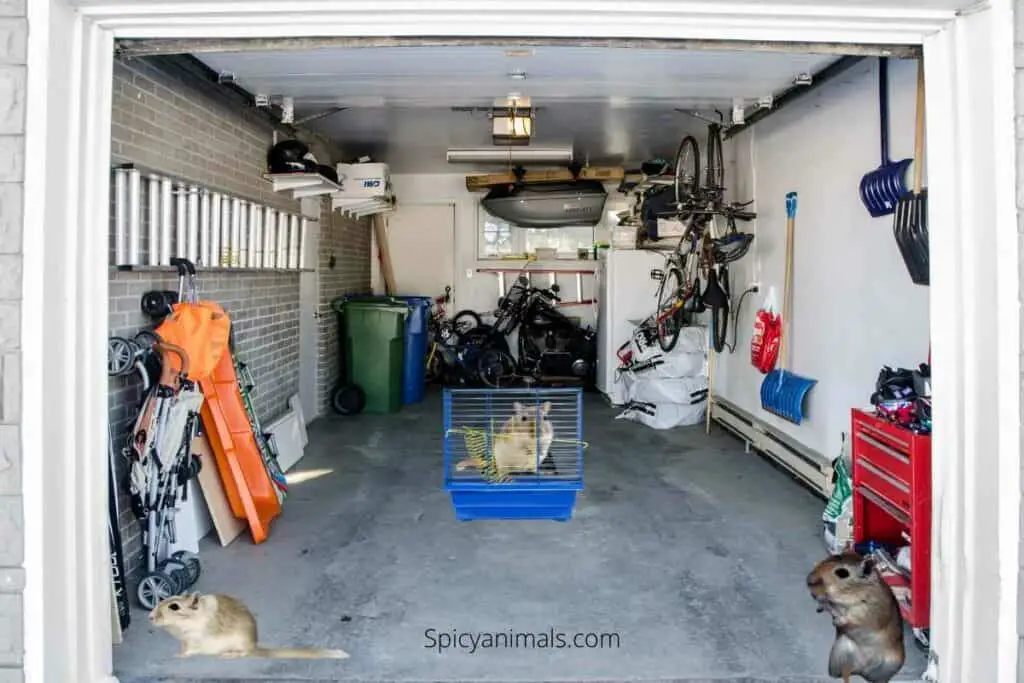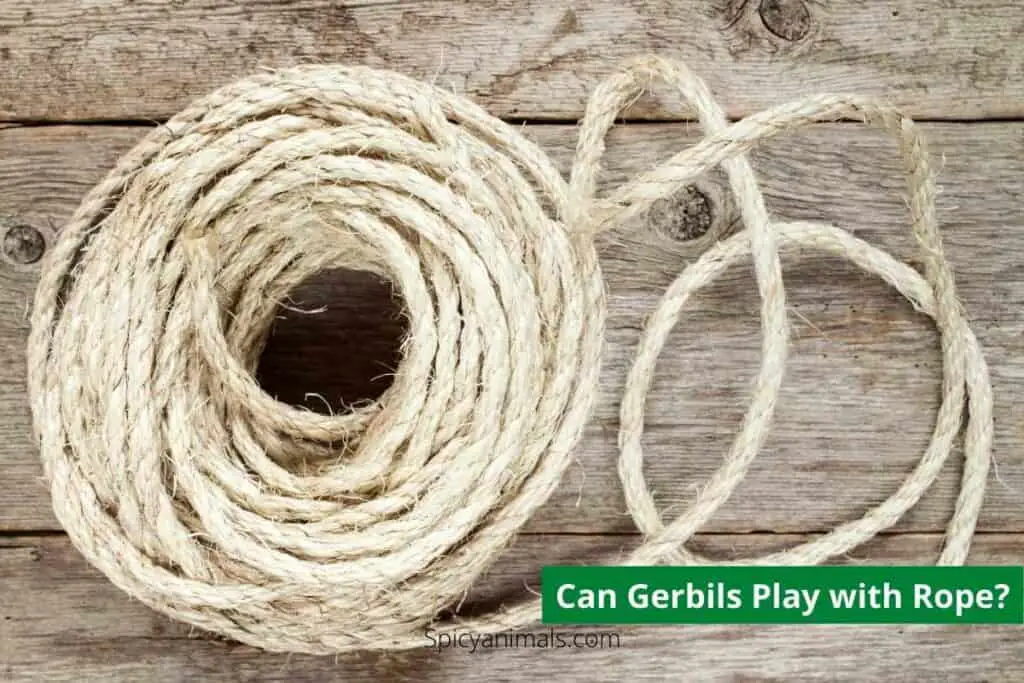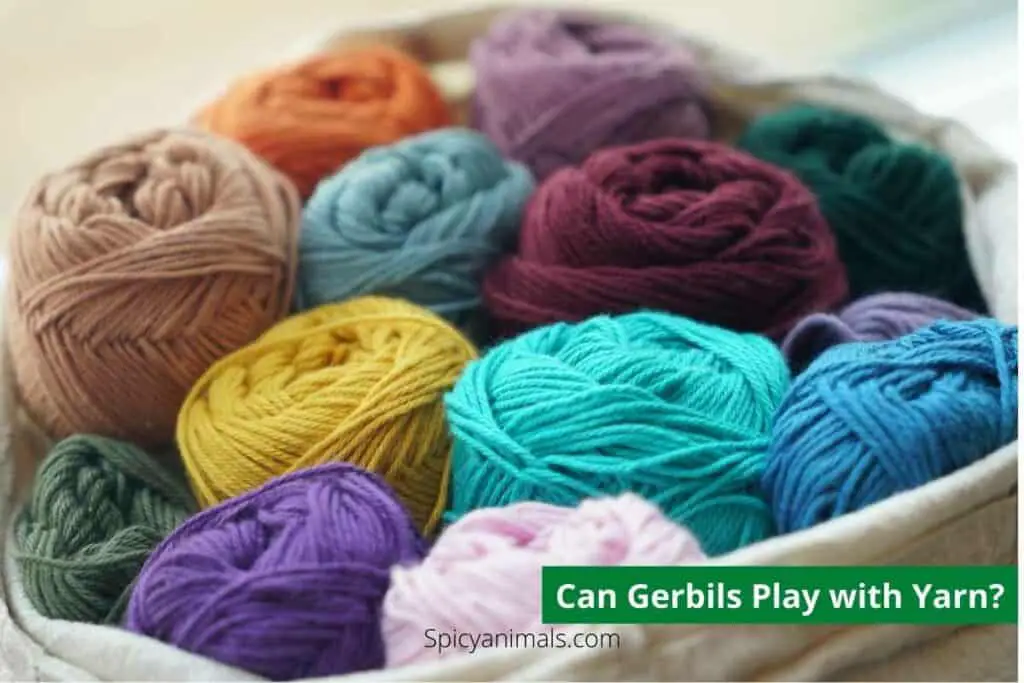Are you a proud gerbil owner or considering becoming one?
Either way, it’s important to know that providing your furry friend with the right living environment is crucial to their health and happiness. So, what is the short answer to what are the gerbil cage requirements?
The minimum recommended cage size is 10 gallons for one gerbil and 20 gallons for a pair.
But there’s much more to it than that! Keep reading to learn about the benefits of meeting gerbil cage requirements and how to choose the right size and materials for your pet’s cage.
Let’s make sure your gerbil is living their best life!
Table of Contents
II. Size Requirements
If you’re looking to provide the best gerbil housing, it’s important to choose a cage that meets the minimum requirements for your pet gerbil’s natural habitat. Here’s everything you need to know about choosing the right size gerbil cage:
Minimum Requirements:
The minimum recommended size for a gerbilarium is 20 gallons, but it’s best to choose a cage that provides at least 400 square inches (2,500 cm²) of surface area for your gerbils to run around and burrow.
For two to four gerbils, a floor surface of at least 100cm long, by 40cm wide, by 40cm tall is recommended.
Choosing the Right Cage:
When choosing a gerbil cage, consider the number of gerbils you keep, their activity level, and the amount of bedding needed.
Gerbils need lots of space to explore and play, so it’s best to provide a cage that is large enough to provide an entire ecosystem for your pets. Glass or plastic tanks with wire lids, and wire cages are all suitable options.
Bedding and Burrow Structure:
Gerbils are sociable small pets that need lots of entertainment and exercise. Providing them with a cage that has enough bedding will help them wear down their claws and prevent them from walking on rough surfaces.
They also need structures in their burrows to provide them with natural habitats, such as hideouts and tunnels, and it’s recommended to provide at least one exercise wheel. Gerbils can chew, so avoid using thin plastic and instead, opt for sturdy materials.
Maintenance:
Keeping your gerbil’s cage clean is important for their health and happiness. The cage should be easy to clean, with a minimum depth of 25cm for the bedding.
The water bottle and food dish should be placed in a safe and secure location and cleaned regularly to prevent contamination. Gerbils can also be happy pets in smaller habitats, but it depends on the number of gerbils you keep and the size of their territory.
In summary, choosing the right size gerbil cage is crucial to your pet’s health and happiness. Consider the size and number of gerbils you have, the depth and type of bedding, the structure of their burrows, and the maintenance requirements.
By providing a comfortable and stimulating living environment, you can ensure that your pet gerbil stays happy and healthy.
Read Also: Ferplast Favola cage review

III. Cage Materials
As a responsible gerbil owner, providing a safe and comfortable living environment is crucial for the health and happiness of your pets. When selecting the right materials for their cage, there are several factors to keep in mind.
Safe Materials for Gerbils
To ensure your gerbils stay healthy, use rough-grained woodchips, hay, aspen shavings, or paper-based products as nesting and bedding materials.
Gerbils can easily chew through plastic, so metal or glass cages are the most suitable options.
Materials to Avoid
Avoid using cedar, pine, or cat litter, as they can be toxic to gerbils and harm their respiratory systems.
Pros and Cons of Different Materials
Metal or glass cages are durable and safe, but they can be heavier and more expensive than other materials. Plastic cages, although lighter and easier to move, can be easily damaged by active gerbils biting and scratching.
How to Choose the Right Materials for Your Gerbil Cage
Consider your budget, your gerbils’ activity level, and your personal preferences when selecting the materials for their cage. Always prioritize your pets’ safety and comfort over aesthetics or cost.
By following these guidelines, you can make an informed decision about the best materials to use for your gerbil’s cage. For more information on recommended cages, bedding, and accessories, check out the links below.
IV. Cage Features
Cage Features are an essential aspect of providing a comfortable and stimulating living environment for your gerbil. Here are some important factors to consider:
A. Bedding and nesting materials:
Choosing the right bedding and nesting materials is crucial for your gerbil’s comfort and health. Safe materials include aspen shavings, paper-based products, or other materials specifically designed for small animals.
Creating a comfortable nesting area is also important, as gerbils like to burrow and create cozy nests. Provide them with plenty of bedding and materials to build a comfortable nest.
B. Hideouts and tunnels:
Gerbils are active and curious animals that love to explore and hide. Providing them with hideouts and tunnels in their cage not only gives them a sense of security but also encourages exercise and play.
Choose hideouts and tunnels made of safe materials such as plastic, wood, or other non-toxic materials.
C. Exercise wheel and toys:
Gerbils are active animals that need plenty of exercise to stay healthy and happy. An exercise wheel is a great addition to their cage, providing them with a way to burn off energy and keep their bodies in shape.
Additionally, providing toys such as chew toys, climbing structures, and tunnels can also stimulate their minds and keep them entertained. Choose toys made of safe materials and avoid anything with small parts that could be a choking hazard.
D. Water bottle and food dish:
Providing your gerbil with clean water and fresh food is crucial to their health. A water bottle is a better option than a dish, as it keeps the water clean and prevents spills.
Choose a bottle that is the right size for your gerbil and made of safe materials. For food, choose a dish that is heavy enough not to tip over and made of safe materials.
By considering these Cage Features, you can create a comfortable and stimulating living environment for your gerbil that promotes their physical and mental well-being.
Remember to choose safe materials and provide plenty of options for exercise, play, and comfort. Your gerbil will thank you with their happy and healthy antics!
V. Proper Ventilation
A) Importance of Good Air Flow for Gerbil Cages
Gerbils need a well-ventilated environment to maintain their health and well-being.
Proper ventilation ensures your gerbil can breathe easily and stay cool in hot weather. Without it, your gerbil may develop respiratory problems and other health issues.
B) Tips for Proper Ventilation in Gerbil Cages
To provide proper ventilation for your gerbil’s cage, choose a cage with good airflow, such as one made of wire mesh or with large air vents. Avoid placing the cage in direct sunlight or near heat sources, which can create uncomfortable hot spots within the cage.
Regularly cleaning your gerbil’s cage can also help maintain good air quality and reduce the risk of respiratory infections.
C) Maintaining Proper Temperature and Humidity Levels in Your Gerbil Cage
Along with proper ventilation, maintaining the right temperature and humidity levels is crucial for your gerbil’s health. The ideal temperature range for gerbils is 65-75°F, and the relative humidity should be kept between 35-50%.
Adjust the location of your gerbil’s cage or use a thermometer and hygrometer to monitor temperature and humidity levels. Keep the cage in a well-ventilated, shaded area and provide fresh water to maintain proper levels.
In conclusion, proper ventilation is essential to maintain your gerbil’s health. By following these tips, you can create a comfortable and healthy living environment for your furry friend.
Remember to prioritize your pet’s comfort and safety over aesthetics or cost when selecting a cage and maintaining its ventilation.
VI. Maintenance Tips
Gerbil Cage Maintenance Tips
Gerbils are adorable and lovable pets, but proper care must be taken to keep them healthy and happy. Regular maintenance of their cage is crucial to prevent the spread of diseases and infections.
Here are some essential tips to help you maintain a clean and healthy gerbil cage.
Cleaning Frequency
Regular cleaning of your gerbil cage is essential to avoid the buildup of feces, urine, and foul odor. A deep-clean of the cage should be done every two weeks, while a spot clean can be done every day.
During a spot-clean, remove any soiled bedding, droppings, and leftover food. For a deep clean, use mild soap and water, or white vinegar to sanitize the cage. Rinse thoroughly and dry the cage before adding fresh bedding.
Introducing New Gerbils to an Established Cage
Introducing new gerbils to an established gerbil cage can be a tricky process. Start by placing the new gerbil in an empty cage beside the established one to let them get used to the smell and presence of each other. Then, place the new gerbil in a separate enclosure within the established cage for a few days.
After a few days, let the two gerbils interact under supervision until they establish a positive relationship.
Dealing with Aggressive or Sick Gerbils
If one or more of your gerbils become aggressive or sick, isolate them from the rest of the group immediately. Provide them with a separate cage and take them to a veterinarian for a checkup.
Depending on the severity of their condition, they may need medication, treatment, or even isolation until they recover.
Spotting Signs of Illness or Discomfort
To keep your gerbils healthy, you must be able to spot signs of illness or discomfort. Observe your gerbils daily for any signs of lethargy, diarrhea, or bloating.
Check if they are eating and drinking regularly, and monitor their overall behavior. Any changes in behavior or appearance could indicate a health issue that needs prompt attention.
With these tips, you can easily maintain a clean and healthy gerbil cage. Happy pet, happy owner!
VII. Conclusion
A.Recap of important gerbil cage requirements:
When it comes to keeping gerbils as pets, it’s essential to provide them with a comfortable and safe living environment.
This means ensuring that their cage is spacious enough to allow for exercise, mental stimulation, and social interaction. A minimum cage size of 10 gallons per gerbil is recommended, but larger cages are even better.
In addition to size, proper ventilation is crucial for maintaining good air quality, preventing respiratory issues, and keeping your gerbils comfortable. Keep the cage in a well-ventilated area and avoid placing it near radiators or air conditioners.
It’s also important to maintain the right temperature and humidity levels, as gerbils are sensitive to changes in these factors. The ideal temperature range for gerbils is 65-75°F, and the relative humidity should be kept between 35-50%.
Regular maintenance of your gerbil’s cage is also essential for their health and well-being.
This includes regular cleanings to avoid the buildup of waste and odors, as well as the proper introduction of new gerbils and the isolation of sick or aggressive ones.
B. Benefits of providing an ideal gerbil habitat:
By providing your gerbils with an ideal living environment, you can help ensure that they live happy, healthy lives.
A spacious cage with plenty of mental and physical stimulation can help prevent boredom, lethargy, and other behavioral issues.
Good ventilation and temperature regulation can reduce the risk of respiratory infections and other health issues. And by maintaining a clean and well-sanitized cage, you can help prevent the spread of diseases and infections.
In addition, providing a high-quality gerbil habitat can also help strengthen the bond between you and your pets. Gerbils are social animals that enjoy interaction with their owners and other gerbils.
A comfortable and stimulating cage can make them feel more secure and content, which can lead to more positive interactions and a stronger bond overall.
Overall, the benefits of providing an ideal gerbil habitat are numerous and are well worth the effort and investment required.
By following the guidelines and tips outlined in this article, you can help ensure that your gerbils live happy, healthy, and fulfilling lives as your beloved pets.
FAQ
What height should a gerbil cage be?
According to the Animal Welfare Regulations (England), cages for 1 to 4 gerbils must have a minimum height of 30 cm and a depth of 25 cm. Another source suggests that the minimum height for a gerbilarium should be at least 30 cm (12 inches) to account for a thick layer of bedding and enough space for gerbils to stand upright if they want to. Gerbilariums should also be at least 50cm tall because gerbils are great jumpers. Therefore, the minimum height for a gerbil cage should be 30 cm, but it is recommended to have a taller cage to provide enough space for gerbils to jump and stand upright.
What size gap can a gerbil fit through?
the gaps between the frame bars of a gerbil cage should be no bigger than 0.5 inch to prevent even the smallest gerbils from escaping. Gerbils are small animals that can fit through small gaps, so it is important to ensure that the cage is secure and has no gaps that are too large.
Do gerbils need a glass cage?
Gerbils do not necessarily need a glass cage, but it is recommended to use a cage made of glass or metal, as gerbils can chew through plastic




